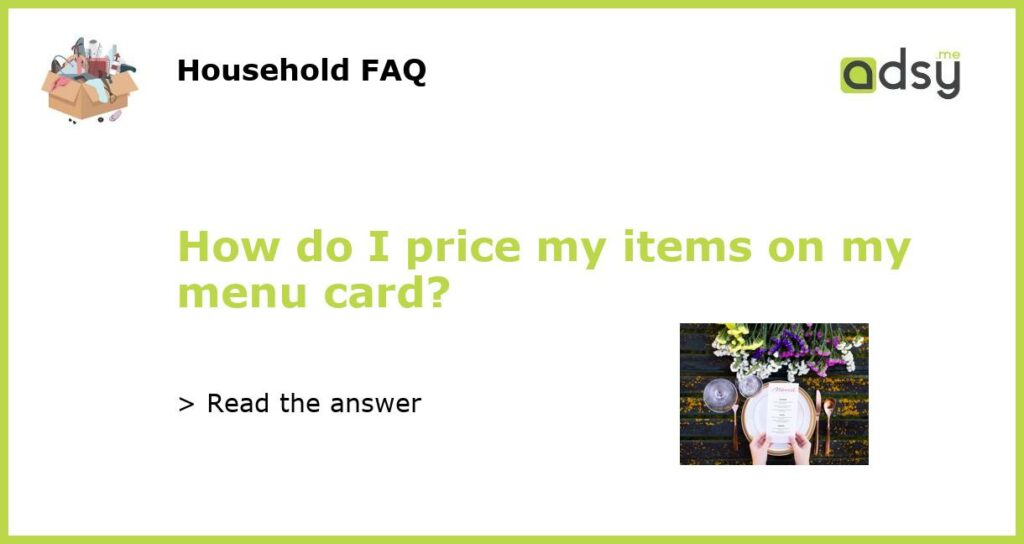Understanding the Importance of Pricing Menu Items
Creating a restaurant menu is an essential part of setting up a food establishment. It not only helps customers understand what dishes you offer but also gives an idea about the price range. Pricing your menu items right can be challenging, but it’s crucial to keep in mind the cost of ingredients, overheads, and other expenses while also considering market trends and customer demands. Customers may judge an establishment by its pricing strategy, so it’s vital to implement a good one, especially in a competitive industry. Here are some tips to help you price your menu card items strategically.
Conducting a Cost Analysis and Research
Before pricing your items, conducting data analysis and gathering research about your competitors’ pricing will help you understand the market. Researching other establishments in your area can provide you with insight into the average prices charged. The average price range can also be found online through online food directories and websites that offer menus. Consider not only your food and ingredient costs, but also overheads, labor, and other business costs when pricing your menu items.
Implementing Menu Engineering to Maximize Profit
Menu engineering is a process to increase profits by strategically using menu design and pricing. It works by categorizing menu items as “stars,” “cash cows,” “dogs,” or “puzzles” to help restaurants understand which items to push or remove from the menu. Star items are those that sell frequently and are highly profitable, while cash cows are those that are popular but typically consume less food cost. Removing underperforming items from the menu can also reduce food waste and overhead costs, freeing up space to push highly profitable items.
Introducing Customized Pricing for Special Offers
Seasonal or promotional specials and discounts can attract new customers, increase revenue, and build customer loyalty. Introduce customized pricing for these offers, taking into account the cost of ingredients and overhead expenses. For example, you can consider having buy-one-get-one offers, happy hour discounts, or thematic discounts on menu items based on a season. Customized pricing is also an excellent way to test new menu items before adding them to the regular menu.
Displaying Prices Strategically on the Menu Card
The way menu prices are displayed can have a significant impact on customer perception and willingness to spend. Displaying prices in a clear, consistent manner can help customers understand the prices and make informed decisions. Consider using pricing strategies like the “charm” pricing strategy, which involves pricing items just below a whole dollar amount, such as $9.99 instead of $10. When displaying prices, ensure they are legible and easy to compare to other menu offerings.






